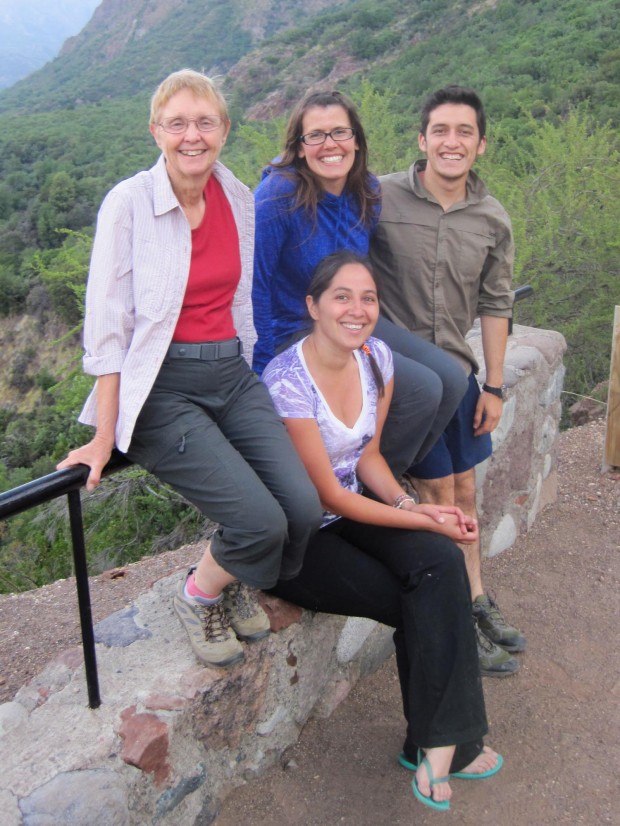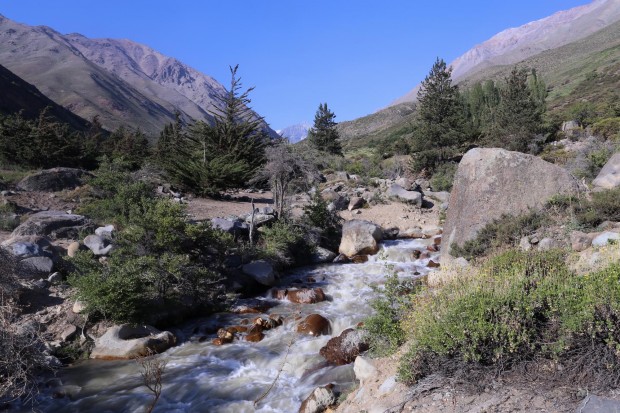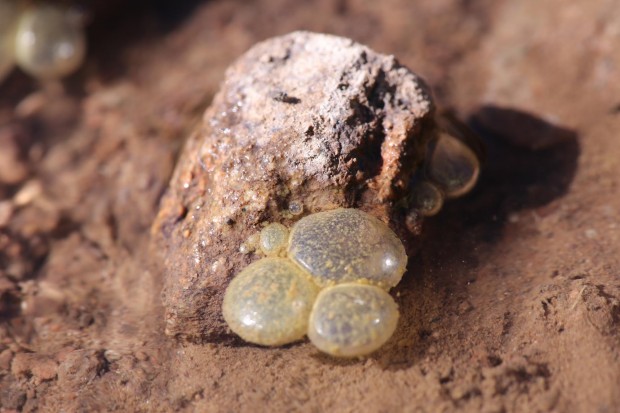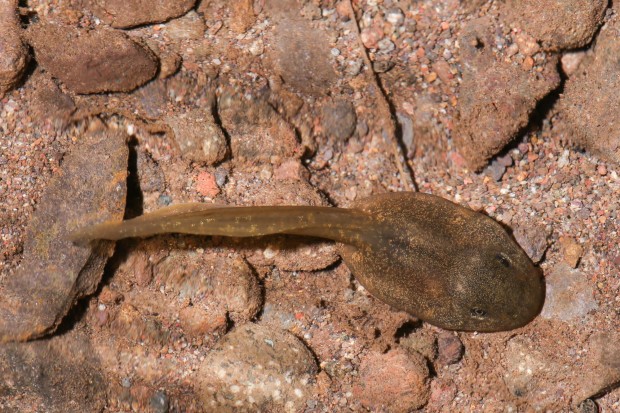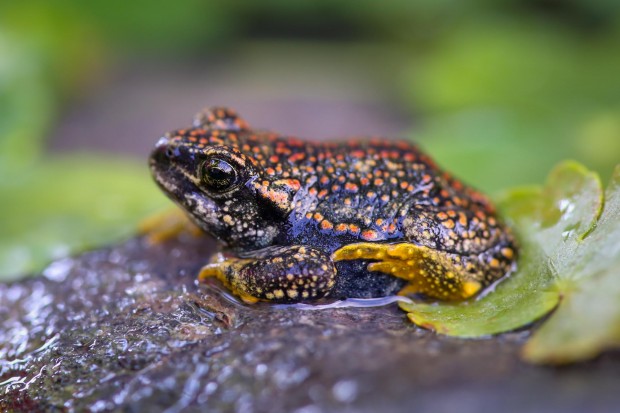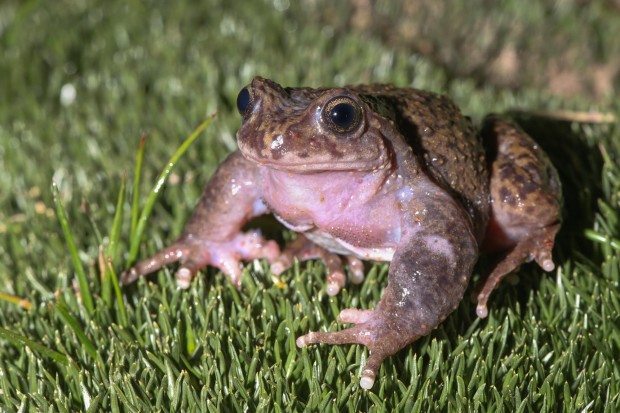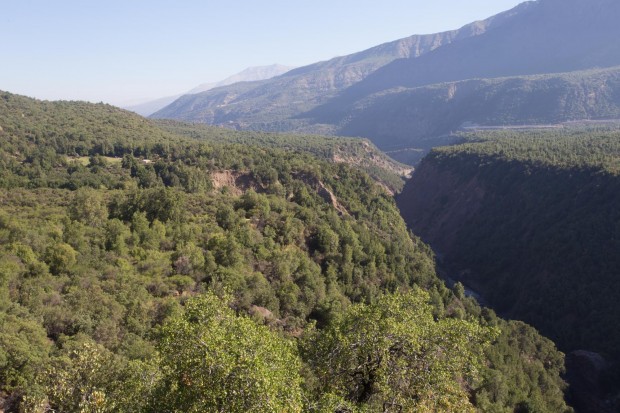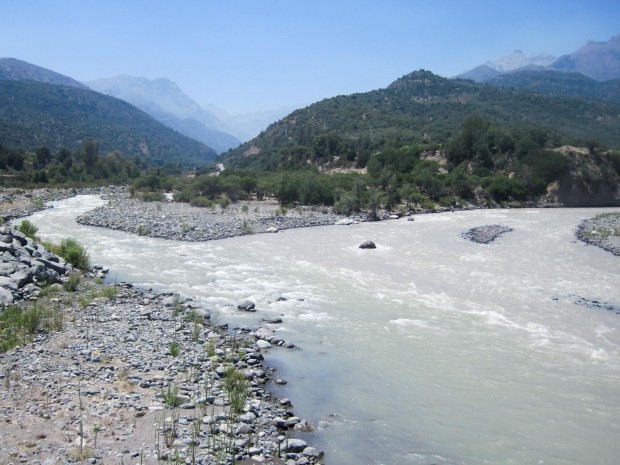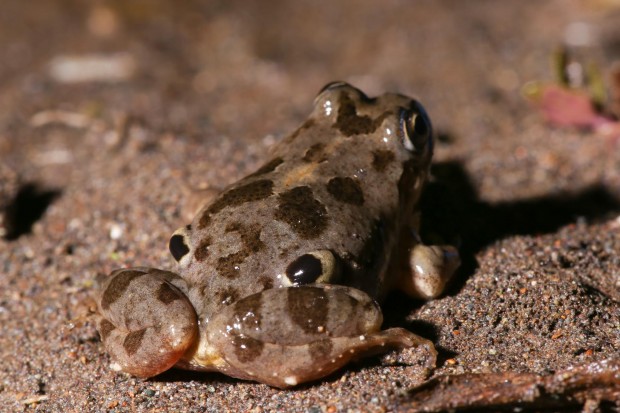The Giant Chilean Toad, sometimes referred to as the Gay’s Frog is endemic to Chile. It’s an amiable monster of an animal, with adult females measuring over 50cm. Like all amphibians the world over the population of this animal has been declining at an alarming rate.
In the past this huge toad has been captured for eating as a local delicacy and many others exported as part of the international animal trade.
Nowadays the problem is even greater, one of habitat loss. The toads’ range in central Chile overlaps with the richest land, land now brimming over with orange and lemon groves, plantations of peaches and nectarines and hillsides of vines for the finest Chilean wines, all these grown for the insatiatiable demand from UK and North American supermarkets.
One day the ‘Frog Squad’ had an urgent request to visit the town of Villa Alemana northwest of Santiago, where a population of these giant frogs were endangered and we were asked to join them.
We all met somewhat surreptitiously in a café to hear the story from a group of locals including a journalist, and teacher, who told us about some huge frogs that inhabited a stream that flowed through the town.
The animals made a lot of noise, some people liked them, some not and others still thought the stream in which they lived was dirty and untidy, the locals were all in dispute about the situation, so the council decided to dredge the stream and ‘clean it up’.
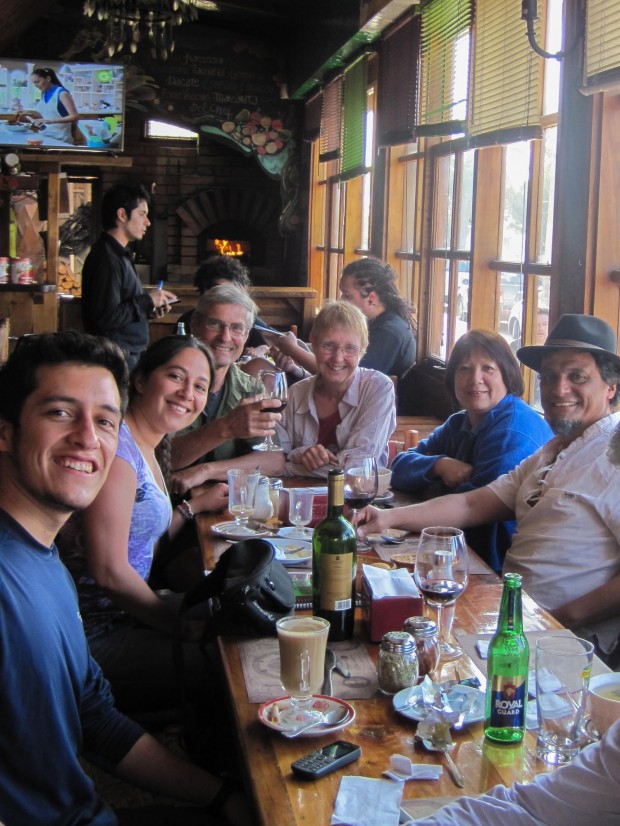
Encuentro en un restaurant
Environmentally sympathetic individuals had spoken to officials, who seemed oblivious to the presence or welfare of the animals.
However local children liked the frogs, they thought the frogs were beautiful, remembering that a far-away princess had even married one !
To the embarrassment of the local council the children ‘adopted ‘ a bridge over the stream and covered it with images of nature and the frogs.
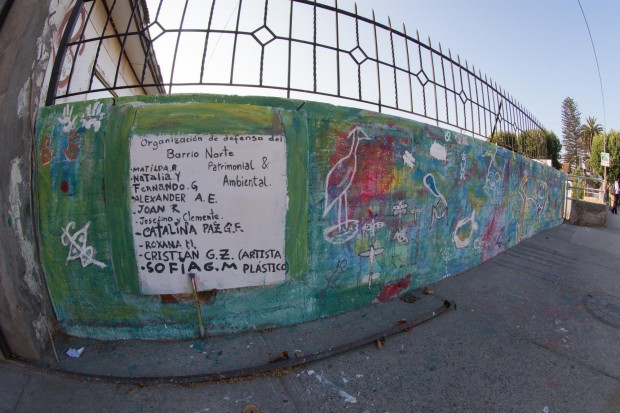
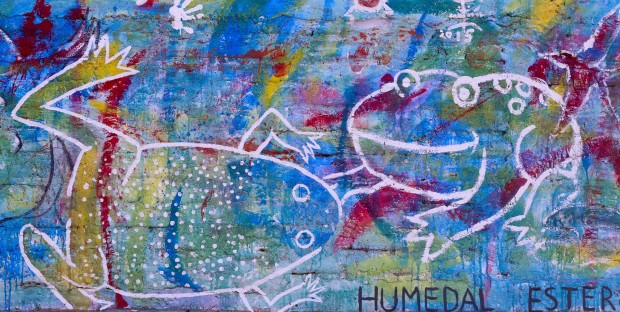
Mural pintado por ninos
This is a common story the world over and one that we ourselves had experienced in our home town of Loughborough in England twenty years ago. In Loughborough they wanted to dredge and channelize the Woodbrook stream, home to nesting kingfishers and bank voles.
In Loughborough then, as now in Villa Alemana, what was needed was a little pressure from the public, some publicity in the local press and some expert advice on how to solve the issue to everyone’s satisfaction.
The Frog Squad were to give the expert advice, but first they had to establish the presence and identification of the animals in danger. So that night we went ‘frogging’.
The stream was in a deep cutting through the town.
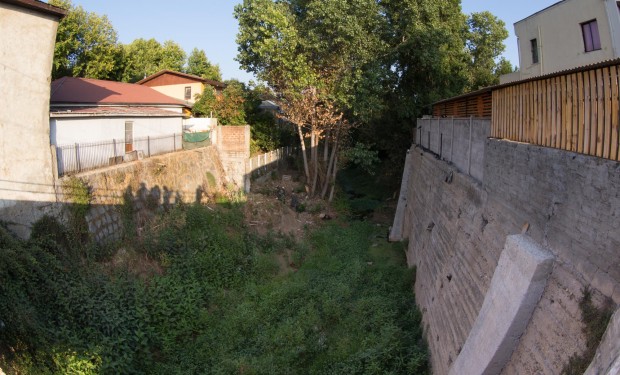
El arroyo en Villa Alemana
We sploshed and waded through the water, sometimes thick with vegetation. There were lots of small native fish, this was clearly a rich habitat for the gentle giant as it requires extensive aquatic vegetation in which to breed.
Gradually as darkness descended we started to see the protruding eyes of these friendly ‘giants’. They were secretive and hugged the overhangs of the banks. With wet feet and wetter arms we eventually caught one of the gentle giants and confirmed its identity, a rare Chilean Giant Toad (Calyptocephalella gayi)
This giant has the most enormous protruding eyes and powerful legs.
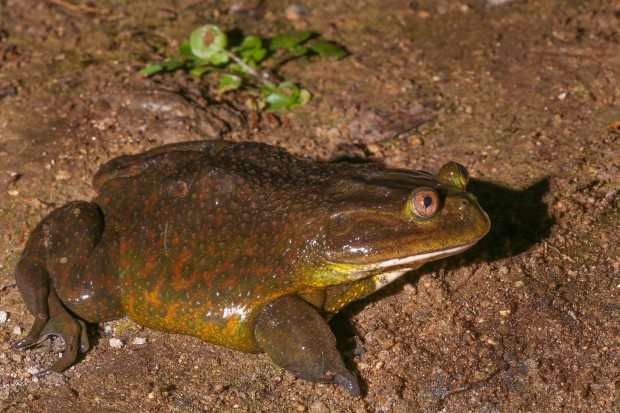
Mira esos ojos !
We found a small population of these wonderful creatures that evening and the Frog squad agreed to back the locals, so with that added scientific proof, hopefully the frogs will have their habitat safeguarded.
Their findings agreed with a report in a local newspaper. The Frog Squad strikes again !
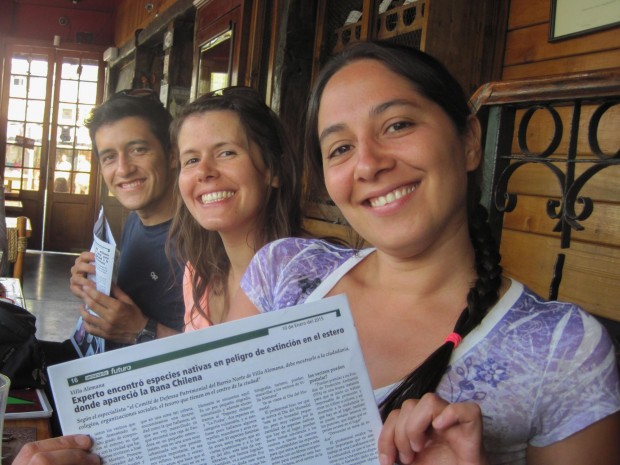
El peloton de ranas al socorro
In a country where environmental matters are secondary and the concept of protecting ‘urban wildlife ‘ is almost unheard of, it is a pleasure to witness local people actively concerned about their own wildlife.







